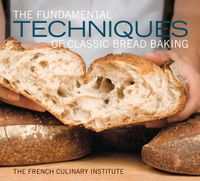Advertisement
Cheese and Other Cultured Dairy Products
Appears in
Cheeses are categorized in two very broad groupings: fresh and ripened. Within each group there are a multitude of subdivisions that classify a specific cheese by texture, terroir (place of origin), mechanics of its manufacture, and ripening process, among other delineations. In addition, a classification may be altered by the aging process because a young, unripened cheese is entirely different from the same cheese that is fully matured.
Almost all cheese is created by allowing milk (usually from cows, sheep, or goats) to thicken until it separates into whey (liquid) and curds (semi-solids). Often rennin, an enzyme that coagulates milk, or other enzymes or special bacteria are added to speed the thickening. Once separated, the liquid is drained and the curds are either allowed to drain completely or pressed into a shape, depending on the type of cheese being made. At this point, the cheese may be consumed as unripened or fresh cheese. Some familiar fresh cheeses are cottage cheese, cream cheese, farmers cheese, and ricotta.

